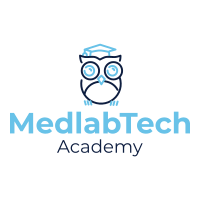The Journey of Phlebotomy: From Rituals to Robotics
1. The Past: Ancient Rituals and the Birth of Science
Picture the 5th century BCE in Greece: a physician uses bloodletting to “balance the humors,” believing it cures disease. While today this might seem archaic, these early practices were humanity’s first attempts to understand the link between blood and health.
The turning point came centuries later when William Harvey discovered blood circulation in 1628, revolutionizing medicine and transforming blood collection into a science.
2. The Present: A Day in Modern Phlebotomy
Fast-forward to today. In a brightly lit clinic, a phlebotomist greets a young patient who’s visibly anxious. They explain each step of the procedure, turning a moment of fear into trust. This is the essence of modern phlebotomy—combining technical skill with patient-centered care.
Venipuncture, the primary method used today, is highly specialized. It’s no longer just about drawing blood; it’s about ensuring accuracy, minimizing discomfort, and contributing to life-saving diagnoses.
3. The Future: Innovations Shaping Phlebotomy
Now, imagine a world where phlebotomy is almost entirely automated. Smart devices pinpoint veins with laser precision, wearable technology collects real-time blood samples, and artificial intelligence analyzes results instantly.
As healthcare becomes more personalized, phlebotomists will play a key role in bridging technology and patient care. Their expertise will be critical in adapting to new tools while maintaining the human connection patients need.
Conclusion
Phlebotomy’s evolution mirrors humanity’s quest for better health—moving from ancient rituals to cutting-edge technology while never losing sight of the human connection.
Today’s phlebotomists are at the forefront of healthcare, and tomorrow’s innovations promise to elevate their role even further. At MedLabTech Academy, we honour this legacy by training the next generation of professionals to excel in this ever-changing field.
Ready to be part of the next chapter in phlebotomy’s story? Join us today and shape the future of healthcare—one patient, one sample at a time.
Picture the 5th century BCE in Greece: a physician uses bloodletting to “balance the humors,” believing it cures disease. While today this might seem archaic, these early practices were humanity’s first attempts to understand the link between blood and health.
The turning point came centuries later when William Harvey discovered blood circulation in 1628, revolutionizing medicine and transforming blood collection into a science.
- Story Highlight: A 17th-century physician carefully explains the new practice of controlled bloodletting to skeptical patients, marking the transition from superstition to science.
2. The Present: A Day in Modern Phlebotomy
Fast-forward to today. In a brightly lit clinic, a phlebotomist greets a young patient who’s visibly anxious. They explain each step of the procedure, turning a moment of fear into trust. This is the essence of modern phlebotomy—combining technical skill with patient-centered care.
Venipuncture, the primary method used today, is highly specialized. It’s no longer just about drawing blood; it’s about ensuring accuracy, minimizing discomfort, and contributing to life-saving diagnoses.
- Story Highlight: A phlebotomist’s calm words and steady hands help an elderly woman feel safe, underscoring the human touch behind every draw.
3. The Future: Innovations Shaping Phlebotomy
Now, imagine a world where phlebotomy is almost entirely automated. Smart devices pinpoint veins with laser precision, wearable technology collects real-time blood samples, and artificial intelligence analyzes results instantly.
As healthcare becomes more personalized, phlebotomists will play a key role in bridging technology and patient care. Their expertise will be critical in adapting to new tools while maintaining the human connection patients need.
- Story Highlight: A futuristic mobile phlebotomy unit visits a remote area, bringing advanced diagnostics to patients who once lacked access to care.
Conclusion
Phlebotomy’s evolution mirrors humanity’s quest for better health—moving from ancient rituals to cutting-edge technology while never losing sight of the human connection.
Today’s phlebotomists are at the forefront of healthcare, and tomorrow’s innovations promise to elevate their role even further. At MedLabTech Academy, we honour this legacy by training the next generation of professionals to excel in this ever-changing field.
Ready to be part of the next chapter in phlebotomy’s story? Join us today and shape the future of healthcare—one patient, one sample at a time.


